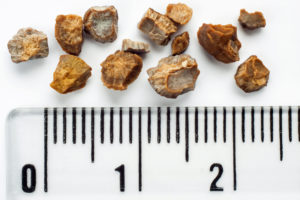 A kidney stone is a rock-like material that forms in your kidneys if high levels of certain materials are present in your urine. When these stones pass through the urinary tract, you may feel severe pain. Fortunately, there are other treatments available to eliminate the stones such as stents, ureteroscopy, or lithotripsy.
A kidney stone is a rock-like material that forms in your kidneys if high levels of certain materials are present in your urine. When these stones pass through the urinary tract, you may feel severe pain. Fortunately, there are other treatments available to eliminate the stones such as stents, ureteroscopy, or lithotripsy.
Do you have a kidney stone? Visit USGA today for relief!
Unfortunately, many people believe myths about kidney stones. Consider the following myths while you take proactive measures to avoid them.
Myth 1: A kidney stone will feel like a stomachache.
While you will have pain in your lower abdominal area, the pain will feel more like a contraction. When you have a contraction, your stomach muscles tighten which causes intense pain. As the stone moves through the urinary tract, the pain may range in intensity and location. Other symptoms of a kidney stone include:
- Nausea
- Pain in the groin area
- Pain while urinating
- Unpleasant odor while urinating
Myth 2: Drinking soda and milk will cause kidney stones.
Soda isn’t the culprit of kidney stones, rather an ingredient in soda – phosphoric acid. This ingredient is what manufacturers use to maintain freshness and add flavor in soda. Regulate your phosphoric acid intake so you are not taking in too much.
Calcium in milk does not cause kidney stones. Many people actually lack calcium which contributes to the formation of kidney stones. Be sure to drink enough milk to ensure a healthy calcium level.
Myth 3: You will pass multiple kidney stones at once.
While it is possible to have multiple kidney stones at one time, it’s more common to only have one (especially if it’s your first). Unfortunately, after you’ve passed your first stone, your chance of having another kidney stone within the following four years is high. If you’re concerned about kidney stones becoming the norm, you can talk with a USGA provider.
To receive a consultation with a physician, schedule an appointment at either our Macon or Warner Robins locations.
